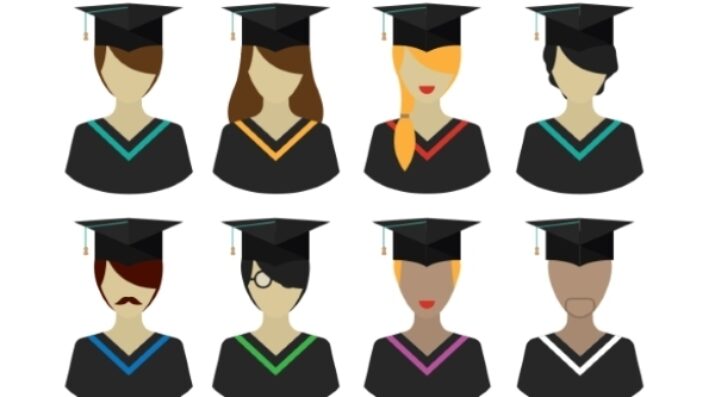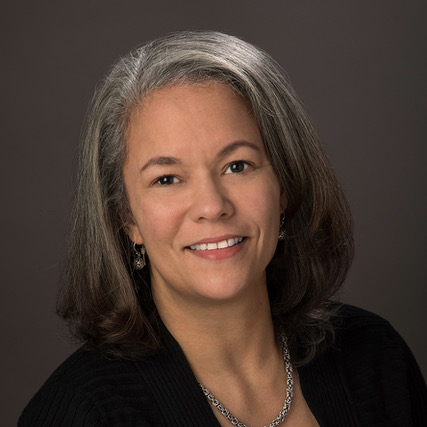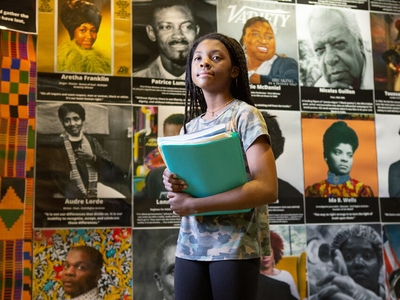Designing for Equity
The Myths of Competency-Based Education: Questions of Equity and Quality
Topics

Together, educators are doing the reimagining and reinvention work necessary to make true educational equity possible. Student-centered learning advances equity when it values social and emotional growth alongside academic achievement, takes a cultural lens on strengths and competencies, and equips students with the power and skills to address injustice in their schools and communities.
With the help of student success coaches, CBE programs provide both workforce preparation and intellectual development for non-traditional students.
Over 200 colleges in the U.S. are now exploring technology-enabled competency-based education (CBE).
Some of this interest is spurred by the realization that the ‘new normal’ in higher ed is a 27-year-old who is the first in her family to attempt to go to college—with a job or a kid or both. It’s hard for these would-be learners to come to the leafy campus, stroll the manicured grounds, and sit in a classroom every M-W-F at 11:00 a.m.
Some of this interest is prompted by performance-based funding formulas, where students’ and institutions’ completion agendas are suddenly starting to align. As it stands, upwards of 37 million Americans have some college credit (and the debt that goes with it) but no college degree. Of those 37 million people, a significant number are people of color.
Critics of CBE are asking whether we are just creating a two-tiered education system where the “haves” can access traditional, leafy campus, programs while the “have nots” are relegated to new models like technology enabled CBE. This criticism reveals three deeply-seated myths about the quality of CBE that need to be dispelled:
- CBE programs are solely focused on workforce preparation.
- Students will not experience intellectual development in a CBE program.
- CBE programs do not provide students access to the student/faculty experience of traditional programs, and this, by definition makes them lower quality.
Workforce Preparation
It’s true that CBE intentionally tries to align itself to the workforce preparation goals of adult learners, and mainstream higher ed would do well to realize that most students regardless of background or age are banking on their investment in a college degree to get them a job and improve their financial stature. Being dismissive of students’ professional goals is not productive or helpful to students or the academy. For African-American graduates, this is especially important—financial well-being is one of the categories where they struggle most. Putting attention on workforce alignment and entry to the workforce is helpful to them, not harmful.
Intellectual Development
This presumption that CBE doesn’t attend to intellectual development really depends on the program’s design. Many of the new technology-enabled CBE programs are working hard to combine both intellectual concepts and workforce-relevant content; they are not mutually exclusive. Rather, a well-designed CBE curriculum will set content in a context that achieves both aims. Critical thinking can be practiced whether you’re talking about coding (example: Which of these three coding solutions is better and why?) or history (example: What are the other options Civil Rights leaders could have considered and why do you support or reject their choices?). Try it before you knock it, critics.
Interaction with Faculty
Finally, the Inspector General, reviewing and criticizing the Higher Learning Commission’s process for reviewing CBE programs surfaced the real third rail of this debate on quality—defining regular and substantive interaction for the purposes of accrediting. In doing so, they lifted to light probably the most difficult part of the conversation because many of the new technology-enabled CBE programs do not utilize faculty in the typical fashion—although very few of them go so far as to eliminate faculty, another common misconception. (Read the latest on what CBE programs really are doing with faculty, courtesy of the Competency-Based Education Network.) What we are going to have to face is that “regular and substantive interaction” as we typically define it is simply another time-based proxy for quality. We hope that by sitting someone next to another person for a period of time, they will have a meaningful and intellectually stimulating interaction, but that isn’t always the case. We’ve all sat in 500-person lecture courses.
Moving ‘new normal’ students through the maze of higher education is tough work; most PhDs in physics are not trained for this or incentivized to become skilled in doing it. To help with this task, many of the new technology-enabled CBE programs are engaging student success coaches whose sole job it is to help students manage the inevitable challenges of being a non-traditional degree-seeker—battling the confidence crises, helping to navigate new technology, or facing up to an academic challenge. These professionals can help students manage the scenarios that we know slow students down, such as enrolling part-time, taking remedial courses or starting off in community college. Minority students are overrepresented in nearly all those categoriesso having staff on hand to help manage these challenges allows academic faculty focus where they are most skilled—in their disciplines on academic content.
Many CBE students feel a strong bond with and sense of support from their coaches. This sense of belonging and being genuinely cared for is especially important to the success and well-being of African American students, and it’s one of the reasons why I think we will see more positive outcomes for students of color in CBE programs. We’re already witnessing evidence of this with programs like Match Beyond, a program that links (mostly) students of color with Southern New Hampshire’s CBE program at College for America.
CBE Opens Doors to Quality
Everyone should feel confident that their education program will prepare them for the goals they are trying to reach and everyone should have the opportunity to go for those goals. CBE opens the doors to a quality education for many people who’ve been shut out by the structure and fees of traditional programs. Former U.S. Secretary of Education Arne Duncan said, "At a time when college matters more than ever, we have to provide a flexible, innovative experience that can meet the needs of every American."
Every American. I couldn’t agree with him more.




